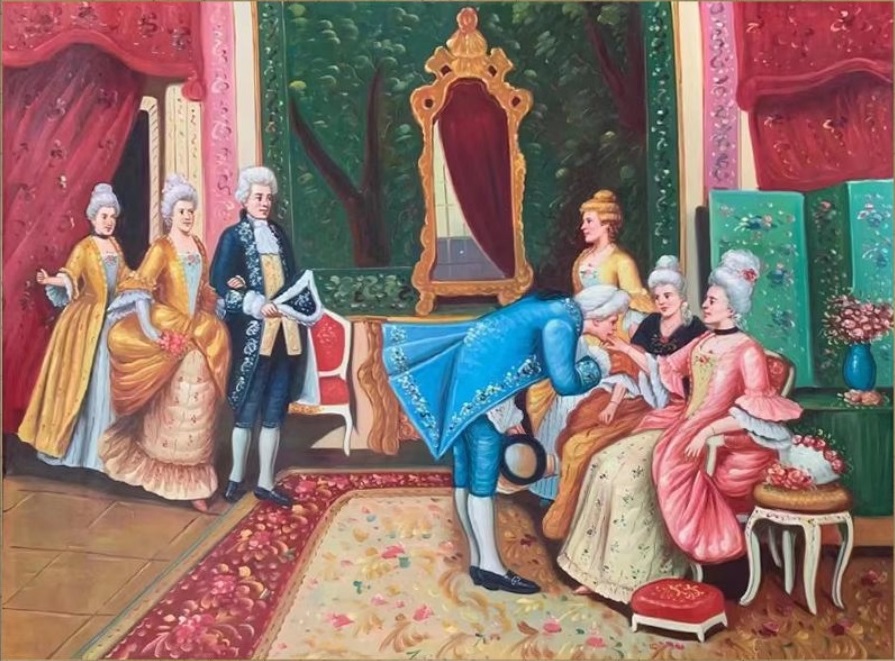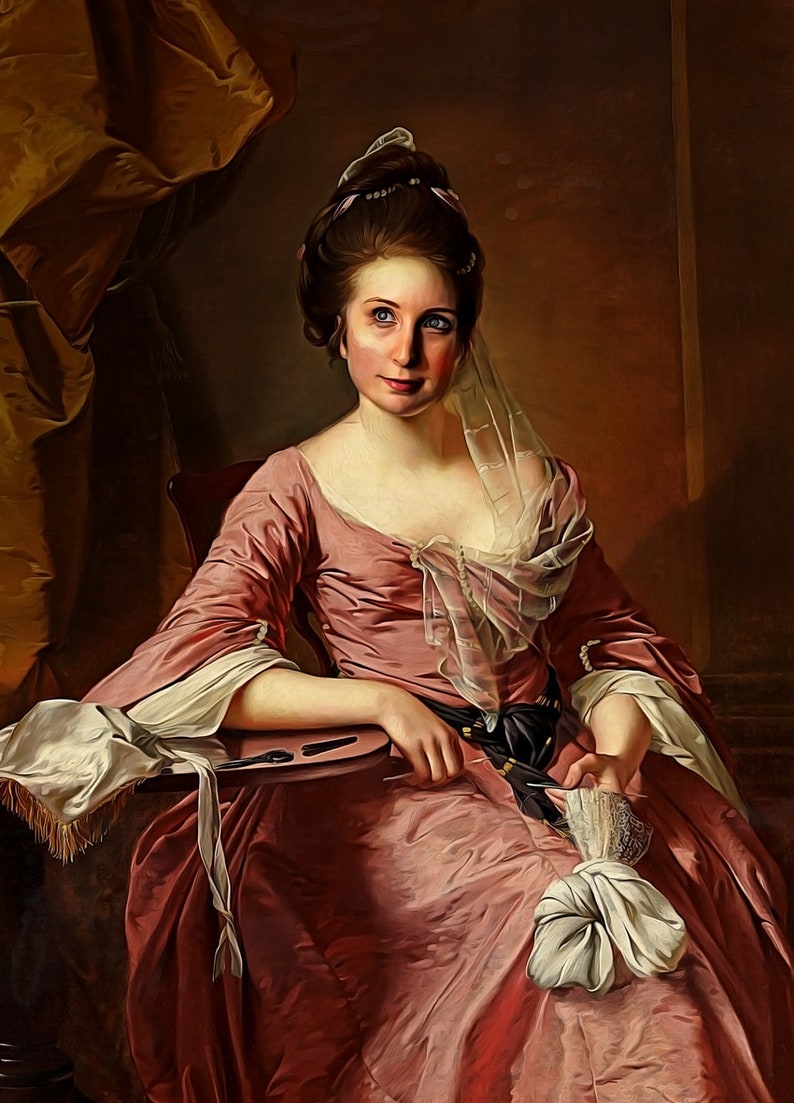
An Inspired Age Selections of 18thcentury European Art from the Collection The Toledo Museum
Classical texts on farming and natural histories by Pliny, Cato, and Lucretius also recorded some of the traditional lore associated with plants. Many of these ideas and associations were passed on to scholars and artists during the Renaissance,. "Food and Drink in European Painting, 1400-1800." (May 2009)

Masterful Artistry Classical European Painting
10 of the Most Famous Paintings in Europe The Raft of Medusa by Théodore Géricault, 1819 Louvre Museum in Paris, France Raft of Medusa by Théodore Géricault, 1819 The Raft of Medusa by Théodore Géricault (1791-1824) is known for bridging two district artist movements: Classicism and Romanticism.

European paintings
In this gallery, we present 50 of the most important Renaissance paintings created by the greatest artists from Jan van Eyck (c. 1390-1441) to Tintoretto (1518-1594). The paintings are presented in chronological order of artists and their works to give the viewer a better idea of the progression of Renaissance art from the mid-15th century to.

High Society, Royalty and Aristocracy, Portraits of Franz X. Winterhalter, Commissioned by Kings
Classicism was a separate trend in Baroque European painting, a style of art in which adherence to accepted aesthetic ideals takes precedence over the individuality of expression. In simple terms, it was a restrained, harmonious style that believed in the primacy of design, rather than color or expression. During the Baroque era of the 17th.

7 Exceptional European Paintings Sotheby’s
Europe is the ultimate art destination. Its rich history spans thousands of years and every art movement. Europe's museums are world famous. The Louvre, Vatican Museums, Uffizi Gallery, British Museum, and more offer tremendous works of art.

Wallpaper ID 97088 / classical art, Europe, Arthur Hacker, 1894, The Temptation of Percival
The Met's world-famed collection of European paintings encompasses works of art from the 13th through the 19th centuries—from Giotto to Gauguin.

Wallpaper classical art, Europe, Anton von Werner, The opening of the Reichstag, painting
Classical notions of proportion, balance, harmony, and elegance subtly permeate the sculptures, architecture, and paintings of many modern art movements. In this article, we are going to take a deep dive into the fundamentals of Classical art and explore its continued influence. Table of Contents [ Show] A Broad Overview of the Classical Aesthetic

Wallpaper classical art, Europe, Giovanni Paolo Panini, ancient rome, 1757 Year, painting
Greatest Renaissance sculptor ( Pieta, David) and painter, renowned for his Genesis and Last Judgement Sistine Chapel frescoes in Rome. Raphael (Raffaello Santi) (1483-1520) Greatest exemplar of High Renaissance painting, noted for his Papal frescoes. Sebastiano del Piombo (1485-1547) Best known for portraits.

Custom Classic Portrait Oil Painting From Photo Renaissance Etsy UK
Ancient European Classical Painting Minoan palaces are the most representative of this period and were richly decorated. Thus, Minoan painting was unique in that it used wet fresco techniques; it was characterized by the small waist, fluidity and vitality of the figures and because it was enriched with elasticity, spontaneity, and the vitality of high-contrast colors.

Barend Cornelis Koekkoek Summer Wooded Landscape With A Castle 19th century landscape, 18th
Classics as a discipline is the study of Ancient Greece and Rome, from c.800 BC to c.400 AD, give or take a couple centuries. Classical, as an art style, covers everything from the early Classical c.480 BC to the fall of Rome in 410 AD. After what we call the 'Archaic,' the Classical style emerged, and remained the dominant style for the.

Canvas Art Picture Print Painting European Classical Figure Oil Painting on Canvas Wall Art
Renaissance art, painting, sculpture, architecture, music, and literature produced during the 14th, 15th, and 16th centuries in Europe under the combined influences of an increased awareness of nature, a revival of classical learning, and a more individualistic view of man.

classical art Europe John Martin 1821 Belshazzar's Feast 1821 (Year) painting 4K wallpaper
This rational, proportionate approach to painting represented the French attitude toward the Revolution and the philosophies of the Enlightenment, or the Age of Reason, which called for serious, clear-headed paintings and subjects that celebrated the excellence of natural form.

EUGEN VON BLAAS Girl at the Window 19th Century European Paintings 19th Century Ptgs
By Lissa Poirot, updated on May 18, 2023 Nadar / Wikimedia Commons From Monet to Manet, Renoir to Rembrandt, Europe's legendary artists are so familiar to us that we can immediately identify their iconic works. Many of these artists' masterworks can be found in their hometowns, but there are also pieces showcased at institutions across the world.

11 MustSee Works of European Art Sotheby’s
The Classical period of European art lasted for two thousand years, leading to the Medieval, Renaissance, and Baroque periods throughout western culture. Later, Christian art began to emerge lasting some 1400 years. The church and symbols of Christianity were reflected in art during that period.

The Country Lovers Pieter Aertsen 150875 Old master, Painting, Kunsthistorisches museum
In its purest form, classicism is an aesthetic attitude dependent on principles based in the culture, art and literature of ancient Greece and Rome, with the emphasis on form, simplicity, proportion, clarity of structure, perfection, restrained emotion, as well as explicit appeal to the intellect. [1]

Canvas Art Picture Print Painting European Classical Figure Oil Painting on Canvas Wall Art
classicism, aesthetic attitude and art style based on or reiterating themes, techniques, and subjects of art from ancient Greece and Rome (spanning approximately from the formation of Greek city-states in the 8th century bce to the decline of the Roman Empire in the 5th century ce ).